|
Most of the continental U.S. has been manicured, bulldozed, replanted, or developed. The lower 48 states look nothing like what their first explorers saw. Alaska is different. Its remoteness, cold climate and huge size keep it undeveloped. Even around the Alaska Pipeline, it’s remained mostly unchanged. 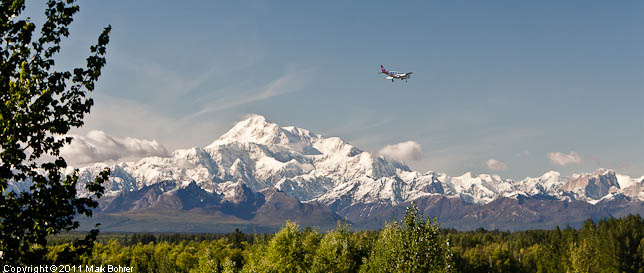 Mt. McKinley from Talkeetna Overlook, Talkeetna Spur Fly-In and Drive – Anchorage Alaska’s huge size invites a kitchen sink approach to travel. But we had just 15 days, so we chose bite-sized pieces around Anchorage, central Alaska, and the Kenai Peninsula. We flew into Anchorage to spend a couple days before heading north to Talkeetna and Denali. It was mid-August, so the sun was setting after 10 PM. That gave us time to take a taxi to Enterprise Rent-a-car in Anchorage to avoid paying on-airport rental rates and fees, and discover the GPS we brought didn’t have maps for Alaska. Since we were driving around Anchorage and the Mat-Su Valley a fair amount, we bought another GPS at the local Radio Shack. 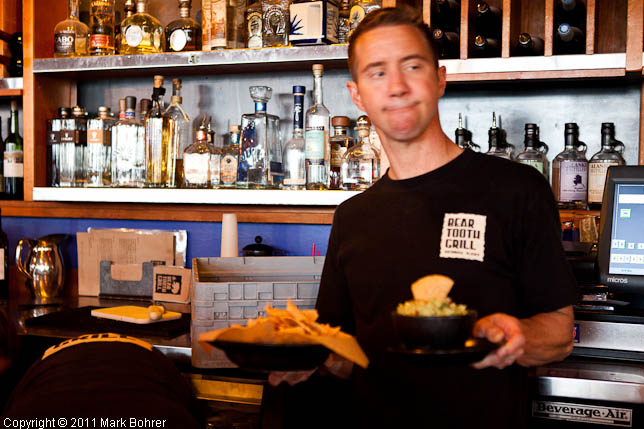 Bartender at the Bear Tooth Theaterpub and Grill, Anchorage We didn’t want to wait 40 minutes for a table at the Moose’s Tooth Pub and Pizzeria, so we found the Bear Tooth Theaterpub and Grill instead. Cindy’s Rita was a very tasty drink, and the salmon tamales showed off creativity and fun in a traditional Mexican dish made with fresh local fish. I couldn’t pass up the Chocolate Ancho-Chile Brownie for dessert, either. 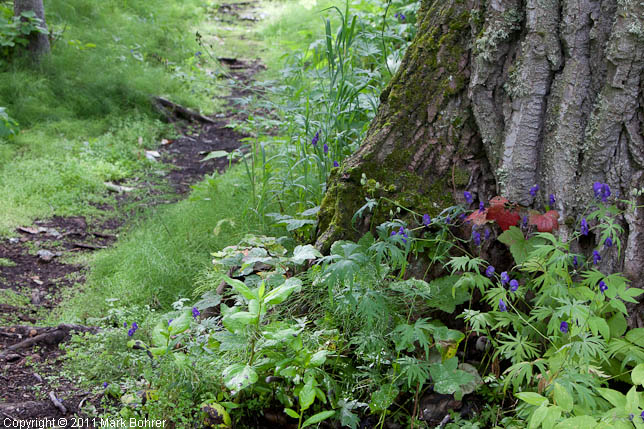 Chugach State Park We spent the next day in Chugach State Park, on trails from the Eagle River Nature Center. Many Anchorage residents hike there with their dogs, since it’s only about half an hour away. Due to Alaska’s short growing season, plants explode across the state in a vibrant green orgy of growth and pollination every summer. We walked through beautiful aspen forests, including some trunks with bear scratches, and wildflowers complete with pollinating insects. We also watched salmon heading upriver to spawn and die, turning more red as they went. Eagle River is also a popular area for moose, but watch from a distance. Clear To McKinley & Funky Talkeetna When you get a clear shot at “The Mountain”, take it. We’d had clouds and rain in Anchorage and Eagle River, but the cloudcover disappeared for our drive to Talkeetna. I’d taken some insurance shots at views farther away along the George Parks Highway, but the pictures from Talkeetna Overlook were the best. 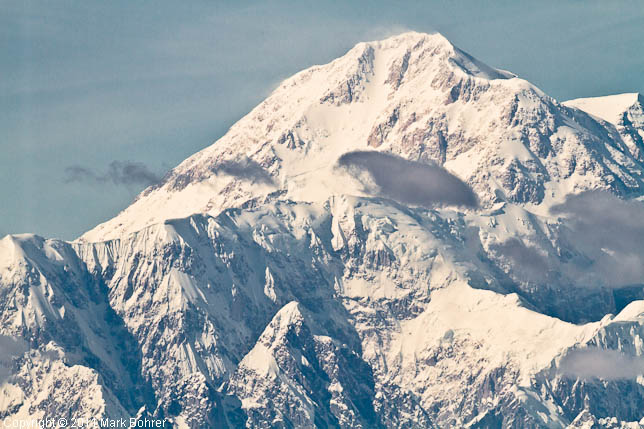 Mount McKinley Summit from Talkeetna Overlook Independent-thinking Alaskans move to Talkeetna to escape city restrictions, politics and taxes. It’s also the base for summit expeditions to McKinley during the early summer climbing season. For us, it was a chance to relax in an Alaskan small town, and try to see something on a flightseeing trip to Denali. I have a problem with motion sickness. Riding in a small DeHavilland Beaver and banking to see scenery while trying to photograph said scenery at the same time probably wasn’t the greatest idea. But I wanted to capture my own ‘glacial river’ shot in the Alaska Range’s glacier maze, so there I was. We had hoped for a glacier landing and views of McKinley, but the cloud deck hung below 12,000 feet. That eliminated both possibilities. Even that low, views were spectacular. 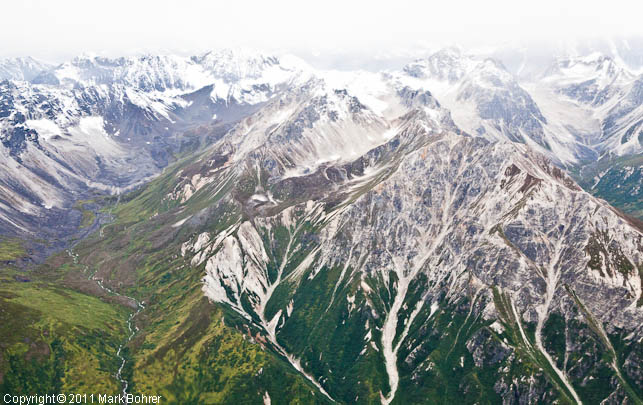 Southern foothills of the Alaska Range I turned very pale by the end of the flight, and was lucky to have the provided air sickness bag. But photographing from that eye-in-the-sky vantage point was worth it. Shot Notes I left the Leica at home this time, opting instead for Canon EOS 5D mark II and EOS 7D. They both use the same small battery, so I could take one charger for batteries in both cameras. I also left my tank-like EOS 1D mark II at home. Its batteries and charger are very large (and heavy), and it has less resolution and lower picture quality than the newer cameras. I used a Gitzo 1625 mk II tripod with Wimberley Sidekick gimbal head. This is a wildlife rig, but it works fine for nature / landscapes if you’re used to it. Two of my Leica lenses sport maximum apertures at f/2 or below, very useful for isolating a subject with shallow depth of field. But f/2.8 and close subject distances can also give you that effect with 28-50mm lenses. I didn’t get the creamy out-of-focus background color I like with most wildlife pictures, but it was enough to lead a viewer’s eye to the sharply-focused subject. Who says 500mm isn’t a landscape lens? I mounted mine for a summit view of Mt. McKinley at the Talkeetna Overlook. It’s a good thing too, since I had just one other opportunity to photograph The Mountain relatively close-in on a semi-clear afternoon. |
(408) 483-3782
Curious about how to shoot ruins?(408) 483-3782

Trackbacks/Pingbacks